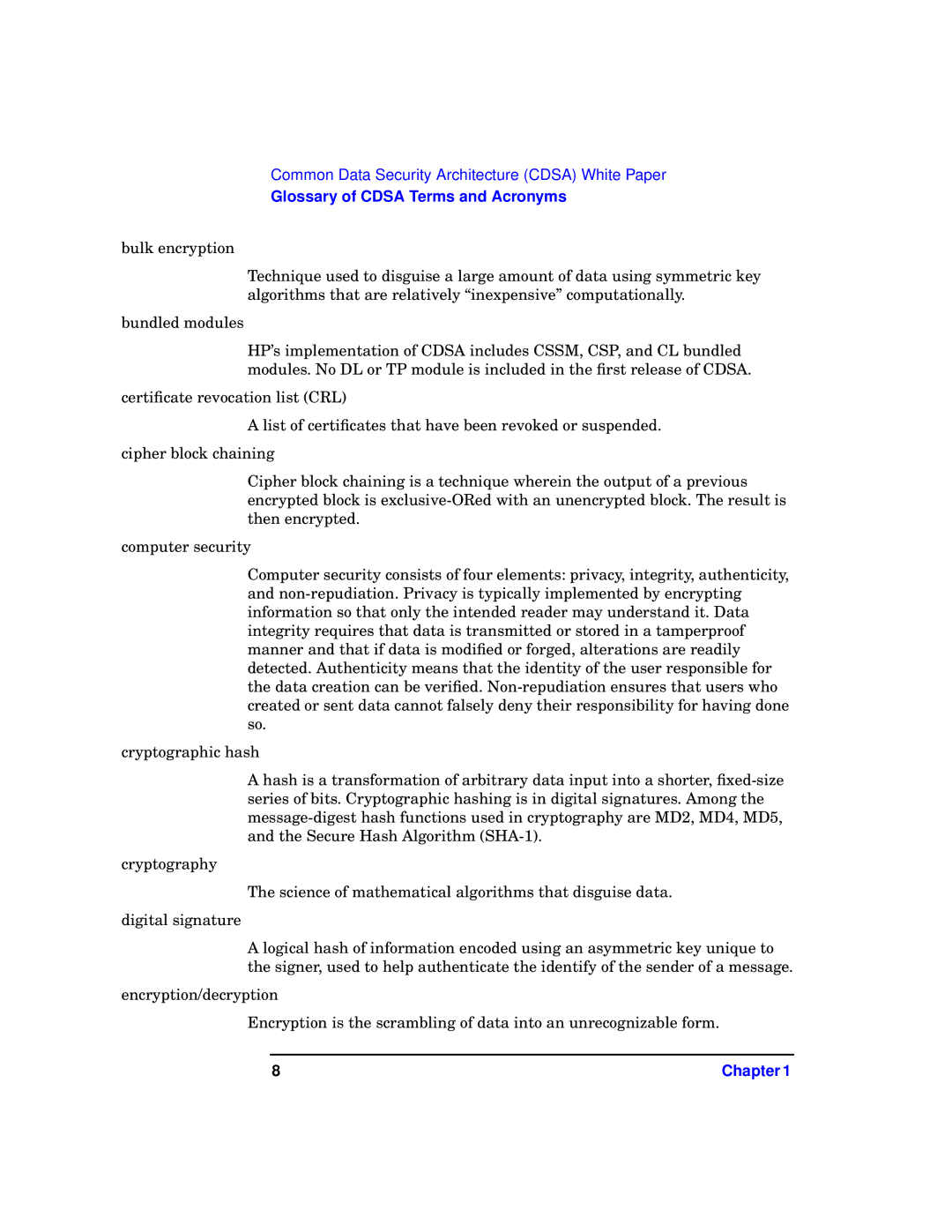Common Data Security Architecture (CDSA) White Paper
Glossary of CDSA Terms and Acronyms
bulk encryption
Technique used to disguise a large amount of data using symmetric key algorithms that are relatively “inexpensive” computationally.
bundled modules
HP’s implementation of CDSA includes CSSM, CSP, and CL bundled modules. No DL or TP module is included in the first release of CDSA.
certificate revocation list (CRL)
A list of certificates that have been revoked or suspended.
cipher block chaining
Cipher block chaining is a technique wherein the output of a previous encrypted block is
computer security
Computer security consists of four elements: privacy, integrity, authenticity, and
cryptographic hash
A hash is a transformation of arbitrary data input into a shorter,
cryptography
The science of mathematical algorithms that disguise data.
digital signature
A logical hash of information encoded using an asymmetric key unique to the signer, used to help authenticate the identify of the sender of a message.
encryption/decryption
Encryption is the scrambling of data into an unrecognizable form.
8 | Chapter 1 |
